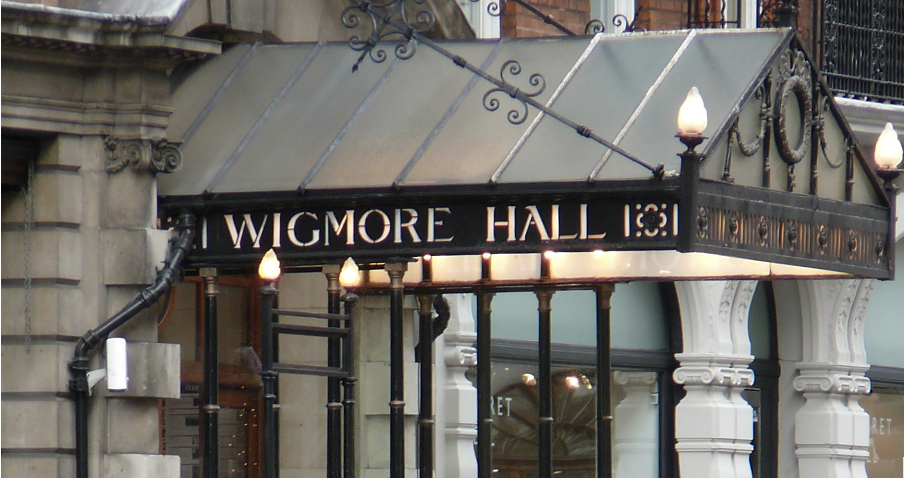
Wigmore Hall’s substantial programme collection, of concerts in which musical migrants played during the 1940s, reveals that mobility of musicians has always been a fundamental part of professional music making.
Author: Sarah K. Whitfield
As part of the Music, Migration and Mobility Research project, the team have been exploring many archives across the UK and in Germany, uncovering the records of musicians, composers and music practitioners who escaped Nazi-occupied Europe. These archives include those held at Glyndebourne, Dartington’s Summer School Archives, the Anglo-Austrian Music Society Archive at Senate House Library and the Music and Migration Collection at Salzburg University. Uncovering these stories demonstrates how many musical migrants were pivotal in shaping musical traditions in the UK during and after World War II, perhaps most significantly, in developing the tradition of chamber music in the UK. One of the most significant performance venues in London during the period for chamber music was – as it continues to be now – Wigmore Hall. Many of our project’s featured musicians frequently played there; including the Amadeus Quartet, Walter Goehr, Maria Lidka, and Paul Hamburger.
In September 2022, I was able to visit and work with their archivist, Emily Woolf, to look through Wigmore Hall’s substantial programme collection and learn more about the concerts in which musical migrants played during the 1940s. The programme collection reveals that mobility has always been a fundamental part of professional music making, not just of repertoire but also of musicians themselves. This article is by no means a complete overview of music at Wigmore Hall during the period but starts to lay out some of the important findings.
During World War II – Music and the War Effort
During World War II, Wigmore Hall was a privately run venue available for hire - artists or their patrons, producers and organisers hired the hall to put on their concert. The Hall miraculously survived the bombing that impacted so much of London and many of its musical neighbours. Queen’s Hall, a major concert venue in Langham Place, was destroyed by an incendiary bomb on 10th May 1941, along with many of the London Philharmonic Orchestra’s instruments. After a brief pause in programming at the outbreak of war in September 1939, afternoon concerts were reinstated by October with a more complete program soon emerging. Many concerts directly responded to the war effort, others specifically engaged with exiled music and musicians from Nazi occupied countries. Groups associated with Allied Forces who were in exile also performed.
Fundraising concerts took place for a wide variety of causes, sometimes related to the war effort, or the devastating impact on the home front. These concerts also often prominently featured migrants: Maria Eisner, an Austrian Jewish soprano, performed at one ‘in aid of Comforts for the Troops’ in 1940 - the program listed her as a ‘Viennese soprano’. Polish pianist Henryk Mierowski gave numerous concerts for the ‘Polish Relief Fund.’
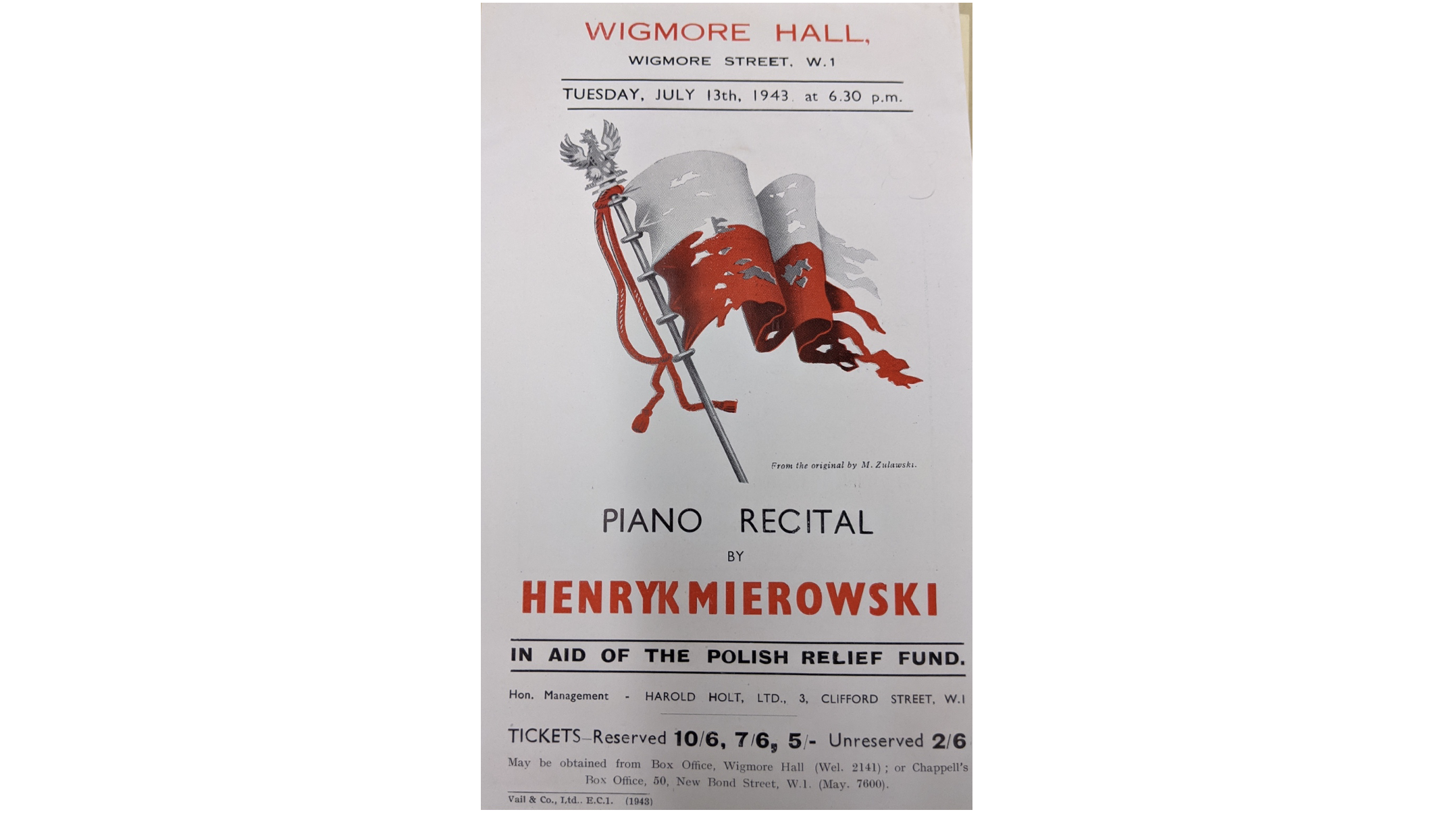
It is important not to lose track of the fact that professional musicians during this period also worked as they do now and appearing at such a prestigious venue helped build their professional and artistic reputations, expanded their audiences, and quite simply, enabled them to make a living.
The Music, Migration and Mobility project has explored how many musical migrants from Germany and Austria were interned during the period 1940-1941, and while facing unimaginably difficult conditions, some were able to form strong professional bonds. The founding of the Amadeus Quartet is a particularly important example of this, Michael Holden has created a series of powerful StoryMaps about the Quartet.
Exploring the surviving programmes
Wigmore Hall’s concert programmes are often stored in an archival box or two per year; gently flipping through the collection begins to establish familiar names and faces. The Scottish pianist Frederic Lamond - often simply ‘Lamond’, was a prolific performer, with a slight look of Beethoven about him. What quickly becomes clear in looking through the programmes, even before the war, is the scale of the mobility that the music industry was built on. Tracing performers from the programme collection reminds us that migration did not suddenly start during this period and was already an important facet of musical production.
Many pianists had complex journeys: Joseph Weingarten who had moved from Budapest to Britain to continue his training in the early 1930s and played many concerts at the Hall, or Ukrainian pianists Lev Pouishnoff (1851-1959), who came to the UK in the early 1920s, and Shulamith Shafir (1924-2001). Shafir was a virtuoso pianist, who first appeared at the Hall aged only 19, was born in Odessa to a Jewish family and had been touring Britain since 1938. One of the earliest performances during World War 2 at the Hall was an Australian pianist, Dr Ruby Davy who gave a series of lecture piano-recitals in 1939. The photograph on the poster shows her in her doctoral robes, with the tag: ‘Australia’s first and only woman doctor of music.’
Several second-generation immigrants performed at the hall, for example violinist Olive Zorian (1916-1965) whose father was Armenian and had moved the family to safety in the UK, or those who had been forced to move in the decades before the war began like Canadian soprano Sarah Fischer whose Jewish parents had moved there from Poland.
Many of the concerts reveal how complex geopolitical situations could be reflected in programming. While there was no artistic director in the way the role is understood today, leading or shaping the Hall’s program, the cost of hiring the Hall would suggest that most people were at least hoping to get their money back. Most of the programming must have at least attempted to appeal to an audience. This might be reflected in appealing directly to a wider local exile or religious community, or in attempts to demonstrate a different public narrative to the wider public.
A ‘national music’?
The archives reveal an extensive range of concerts from national affiliated groups or exiled groups during the war. There was a massive presence of Austrian and German music, Polish music, French music, and other less frequent programming like those around Dutch and ‘Ancient and Contemporary’ Belgian music. In this article I am exploring German, Austrian, Russian, and Czech music from within this much wider assortment. What is clear is that in many concerts at Wigmore Hall during the war, music’s perceived ‘national identity’ is central to a great deal of programming.
In December 1939, a ‘Russian Historical Concert’ clearly locates Rachmaninoff (1873-1943) in the context of his wider contemporaries like Nikolai Medtner (Никола́й Ка́рлович Ме́тнер, 1880-1951), Sergey Taneyev (Серге́й Тане́ев, 1856-1915) and Alexander Konstantinovich Glazunov (Алекса́ндр Константи́нович Глазуно́в, 1865-1936). There is clearly a statement being made about the value and importance of Russian music and Russian composers - perhaps ‘do not discount this’.
While music’s ‘national identity’ has long been challenged and disputed, at the time, there was clearly a political and cultural expedience to identifying music in this way within the concerts. It raises personal questions about what it must have been like for musicians who were unable to return to the country the music was representing. There were occasions where music seems to be presented as purposefully dislocated from its socio-political surroundings, pianist Lamond’s first concert after the start of war featured six pieces, five of them were Beethoven pieces.
Much care is needed in thinking about music and nations, and cultural identity in this period. Michael Kater, in his 1997 book ‘The Twisted Muse: Musicians and their Music in the Third Reich’ notes that Jewish musicians in Germany were banned from playing Beethoven in 1936, and Mozart by 1938. It is hard not to read German and Jewish heritage musical migrants playing work by Beethoven and Mozart as anything other than a profoundly political statement.
Beethoven expert and musical migrant Peter Stadlen frequently performed at the Hall. He played a wide range of repertoire including Beethoven and Mozart and music by other musical migrants, including Egon Wellesz. The Anglo-Austrian Music Society (chaired by Sir Adrian Boult) brought together violinists Max Rostal and Hans Schidlof, and Maria Lidka on the viola (better known for her violin work) with British musicians and performed work by Beethoven in January 1944. Walter Goehr led a series of concerts with the group Musical Culture Ltd, a company about which little is currently known but seems to have been frequently engaged in presenting music from occupied countries.
Other concerts focused on Entartete Musik, music which had been forbidden under the Nazis as so-called ‘Degenerate Music’. One concert celebrating banned composer Gustav Mahler’s work in May 1941 was led by German migrant musicians who included singers Irene Eisinger, Sabine Kalter and Ernst Urbach; and pianists Berthold Goldschmidt and Paul Lichtenstein.
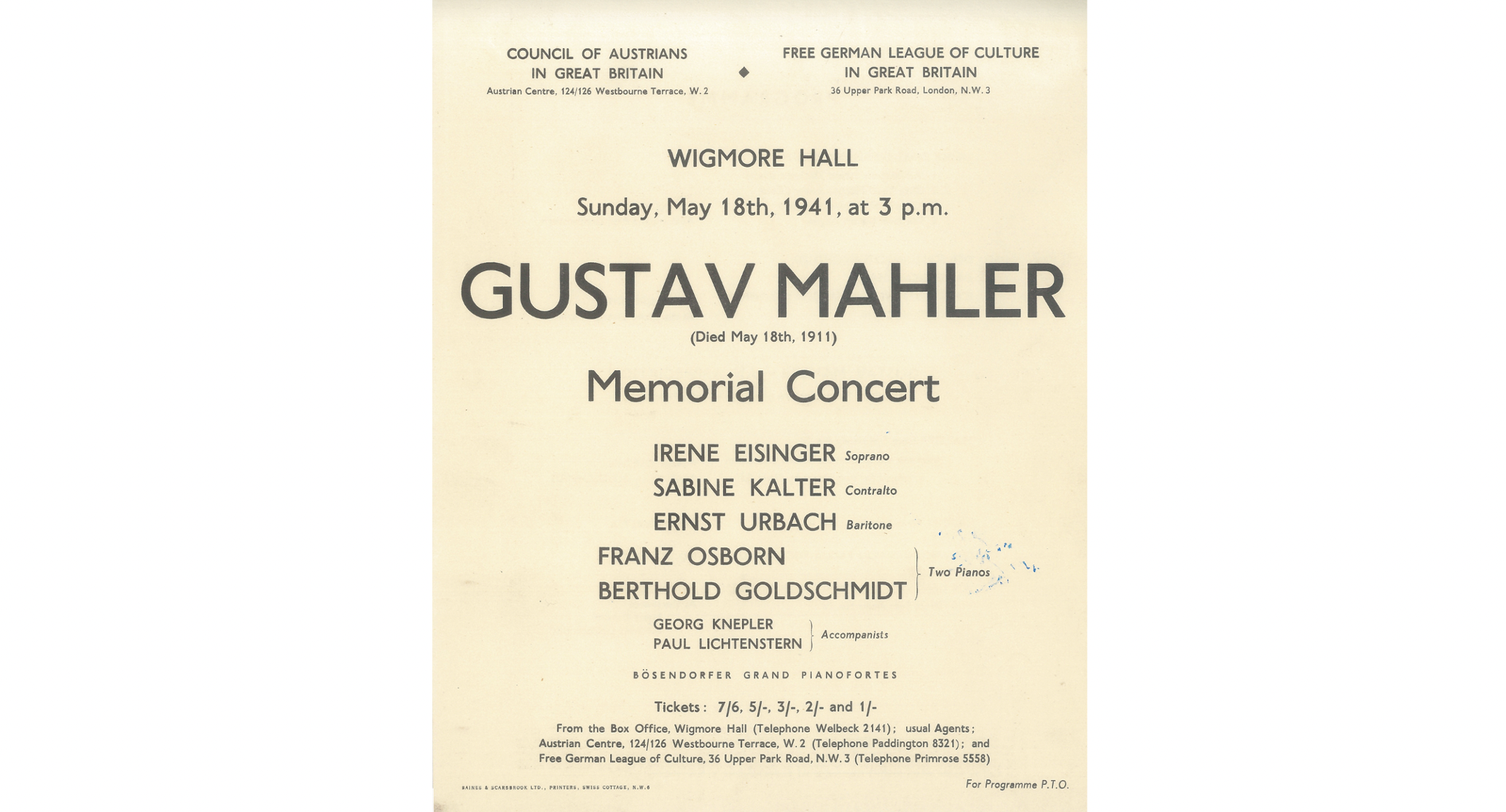
In 1943, the Anglo-Austrian Music society produced a concert of ‘Austrian Music Banned by the Nazis’, which again included Mahler and Egon Wellesz, alongside Alban Berg, Ernst Krenek, and Hans Gál.
.png)
The ‘Free German League of Culture in Great Britain’ also produced a concert in February 1942, highlighting music from across the Allies and occupied nations - Sir Granville Bantock gave a speech. Max Rostal played at the Hall many times, including at a concert in 1943 with soprano Oda Slobodskaya to raise funds for the ‘Jewish Fund for Soviet Russia’.
Russian music and organisations
There were several concerts of Russian music at the Hall staged by the Russian community in London before the Nazi invasion of the Soviet Union in June 1941, when Russia was part of the Axis. At this point music is specifically Russian rather than ‘Soviet’ - a switch which is made after June 1941 in some but not all programmes.
One of the most striking of these early concerts starred Georgian piano virtuoso George Chavchavadze who gave a concert organised by the Russian Red Cross on 2 March 1940 was raising money for the Finnish Red Cross. The choice of fundraising was surely not accidental, given Russia had invaded Finland in November 1939.
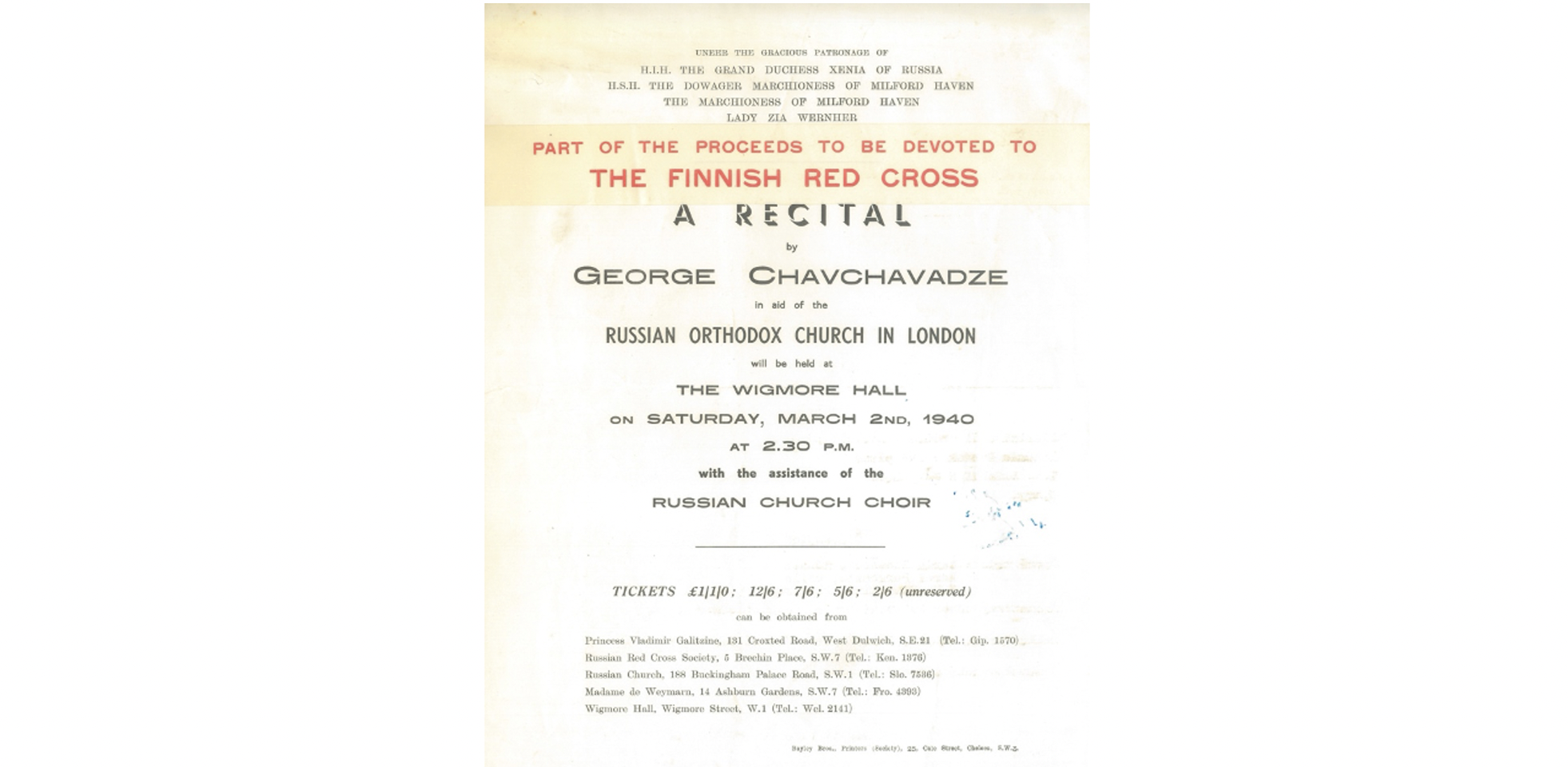
Concerts programmed a wide range of Russian composers: Boris Karagitchev (Борис Васильевич Карагичев, 1879-1946), Oles’ Semyenovich Chishko (Олесь Семёнович Чишко, 1895-1976), alongside the better known Pyotr Illyich Tschaikovsky, Aram Ilyich Khatchatourian (Арам Ильич Хачатурян, 1903-1978), and Dmitri Dmitriyevich Shostakovich (1906-1975).
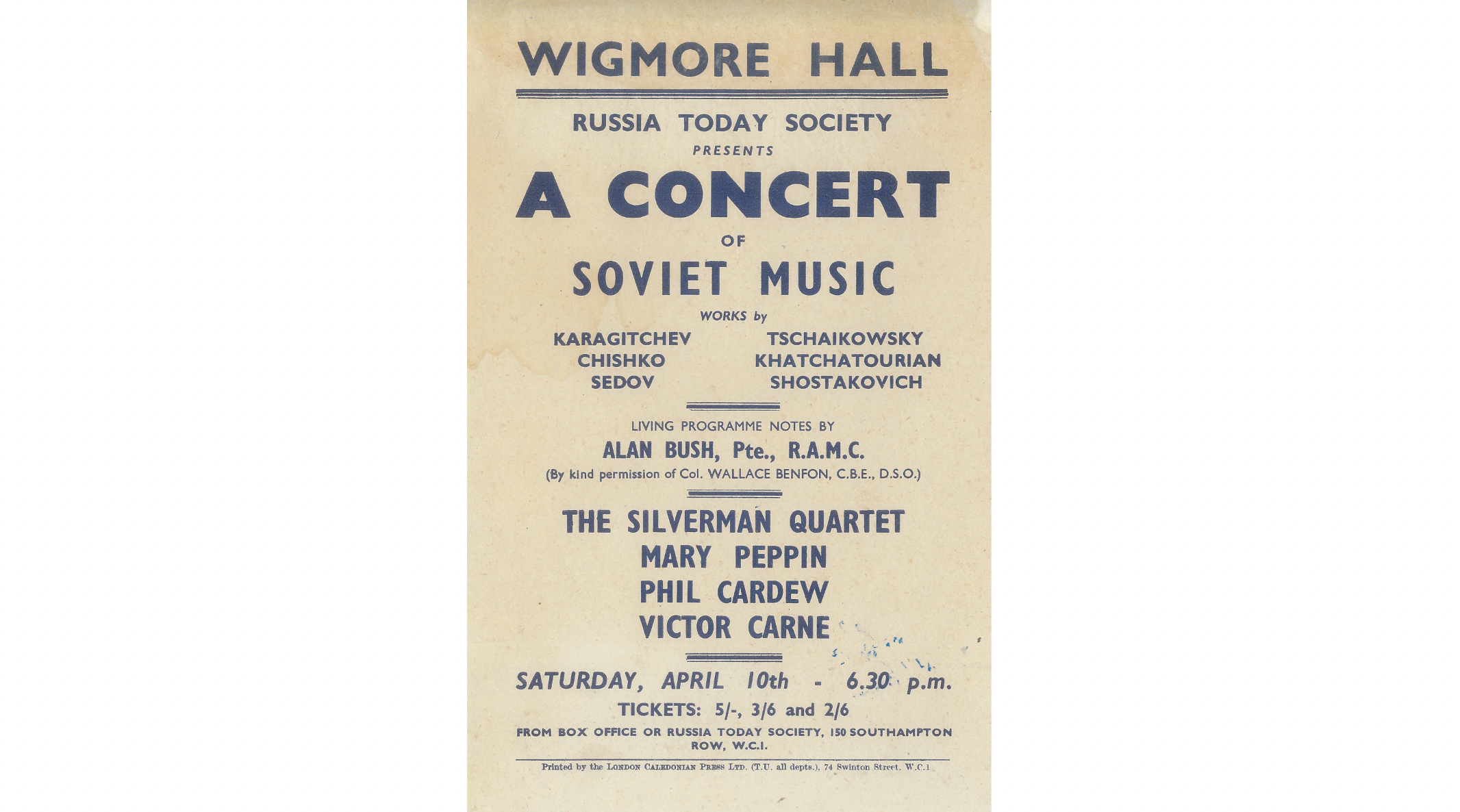
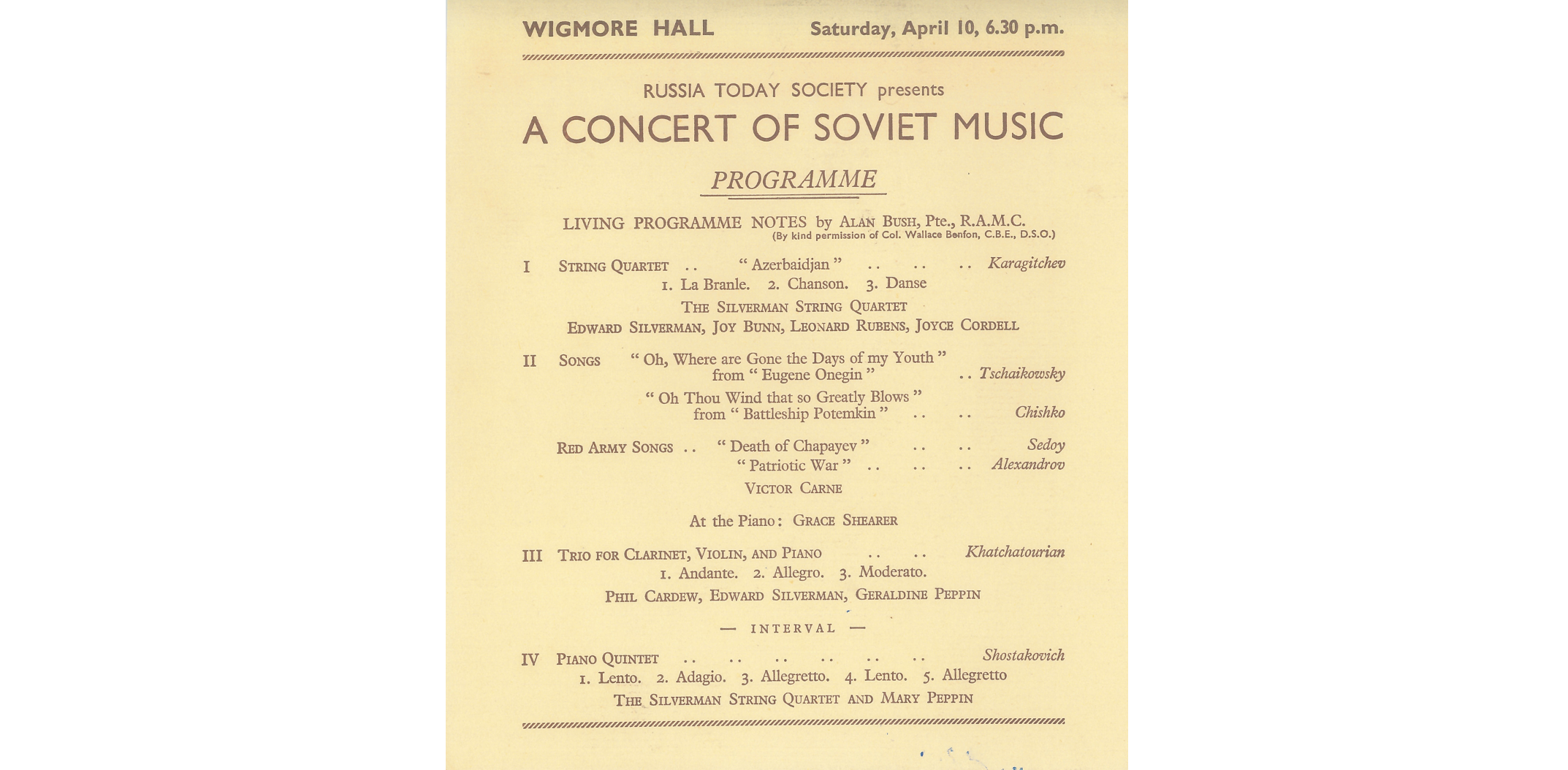
In June 1943, a concert around the ballet and film music, and songs of Mischa Spoliansky (1898-1985) featured the composer playing his own music with Irene Eisinger performing. Eisinger, a German and later British soprano, was a hugely important figure in her own right, not least for her work at Glyndebourne Festival Opera.
Czech music at Wigmore Hall
The programme collection reveals a significant presence of Czech music performed at Wigmore Hall during the war, through both musical and political organisations. The Czech Institute proudly advertised concerts ‘under the patronage of M. Jan Masaryk’ (Masaryk was the Foreign Minister of the Czech Government in Exile).
Rarely heard Czech composers Otakar Ostrčil and Ladislav Vycpálek, were often featured alongside better-known composers like Antonin Dvořák, Vítězslav Novák and Leoš Janáček. Bedřich Smetana, Josef Suk and Dvořák were the three pillars of the Czech Trio’s repertoire during the war. This important string trio played many times in various incarnations: including with violinists Maria Lonova, Maria Lidka, and Jan Sedivka; cellist Karel Horitz; and pianists H. W. Susskind and Lisa Marketta.
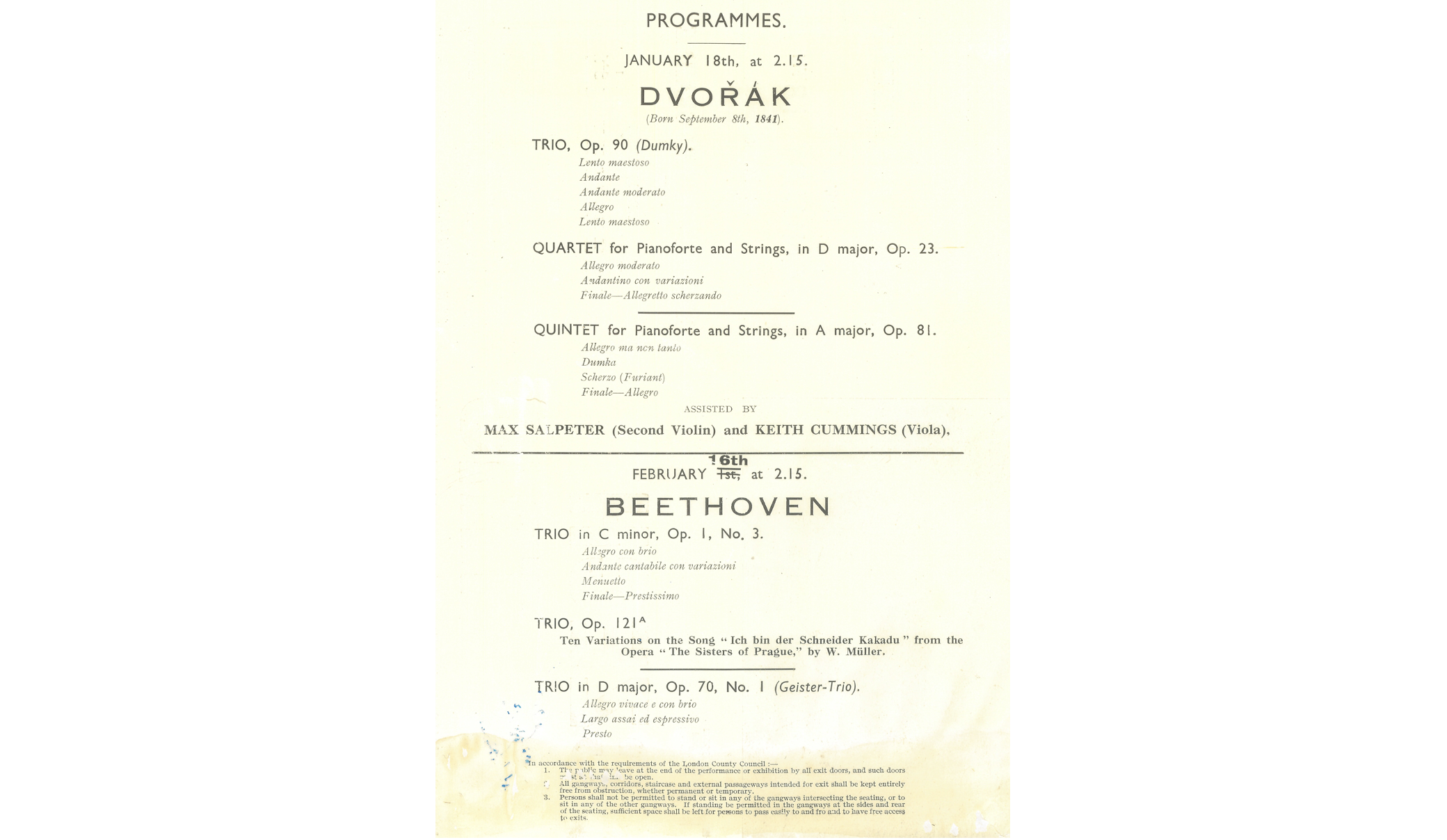
The Trade Union Centres gave a concert in aid of the ‘Lidice Shall Live’ fund. This movement was a public response in Britain to news of the Lidice Massacre. The concert presented music from Smetana’s Braniboři v Čechách, alongside featured work by Beethoven and Schubert.
The Wigmore Hall material though is a reminder of the breath-taking scale of musical migrants’ work in the UK - and allows us to be sure that the Hall was a key place for communities facing persecution, migration, and dislocation during the war. There is much to be unpicked about music and nation building, but just as crucially, remembering and retelling the names and stories of the musicians.





.png)









